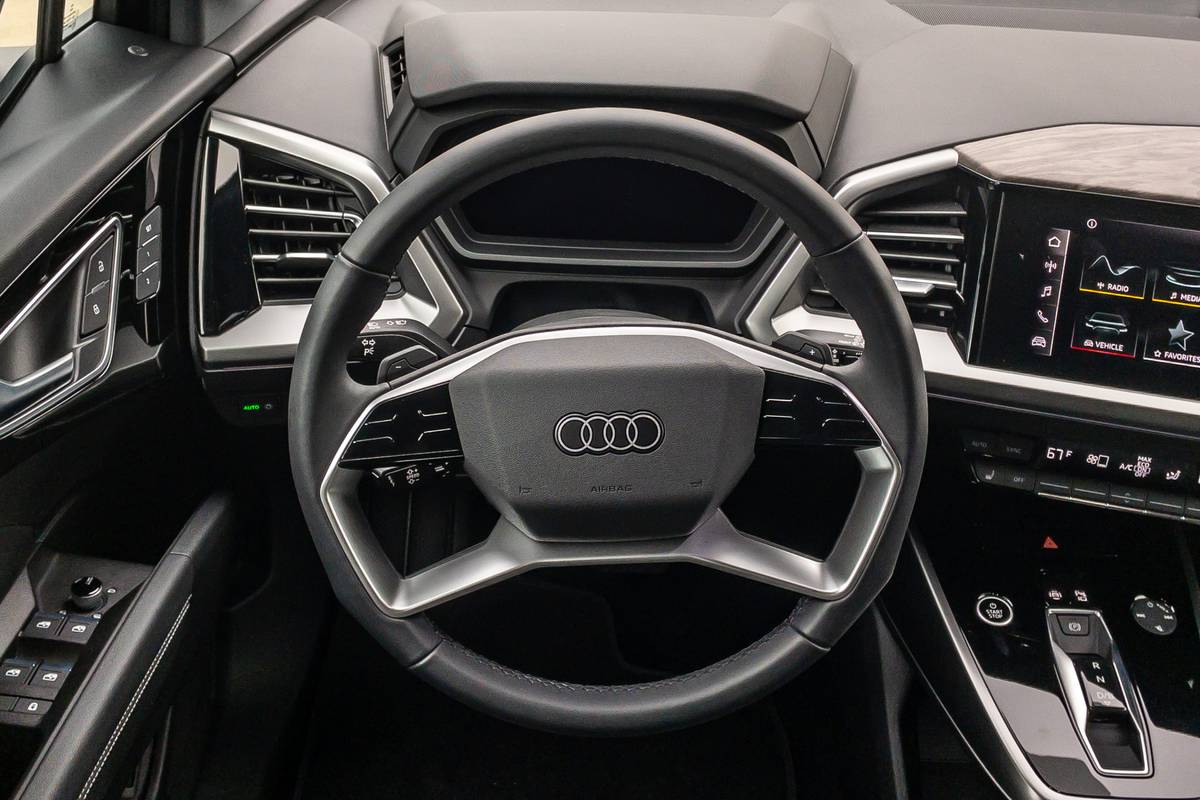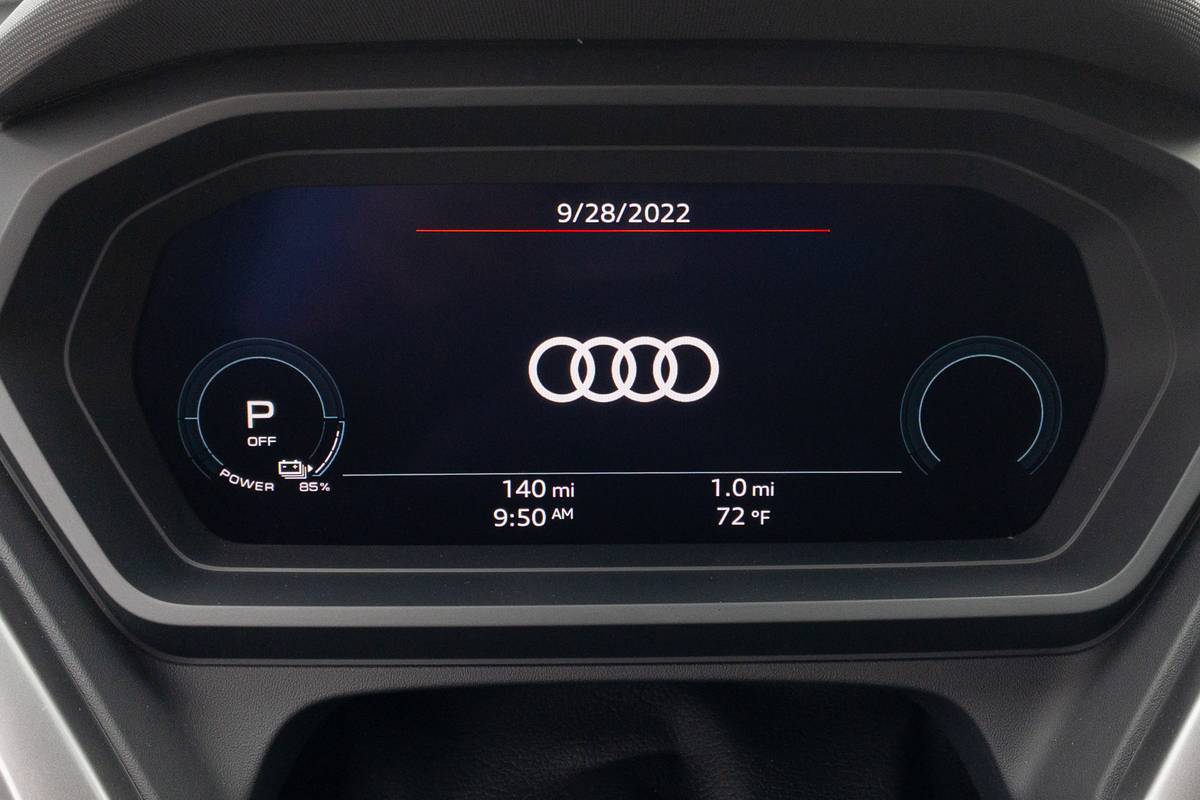2023 Audi Q4 e-Tron and Q4 Sportback e-Tron Review: More Normal Than Radical
The verdict: Carrying the cachet that comes with an Audi badge, the Q4 e-Tron family of electric SUVs do very little poorly or foolishly and are a “normal” option for shoppers who aren’t as daring as some EV early adopters.
Versus the competition: While not as sporty or powerful as similarly sized or priced premium electric SUVs, the Q4 e-Tron and Q4 Sportback e-Tron are accessible and intuitive models that make a strong case for themselves as SUVs that just happen to be EVs.
Audi is expanding its electric vehicle portfolio and adding a smaller, more affordable model in the Q4 e-Tron, which is available in a traditional SUV body style and coupelike version named the Q4 Sportback e-Tron. I traveled to Oceanside, Calif., (per Cars.com’s ethics policy, we pay for our flights and lodging when attending such manufacturer-sponsored events) to spend a brief time behind the wheel and poking around the two versions to see where they stand in the constantly growing electric SUV field.
The Q4 e-Tron is available in single-motor rear-wheel-drive form or with dual motors and all-wheel drive, but the Q4 Sportback e-Tron is AWD-only. The battery pack is an 82-kilowatt-hour unit no matter which version you get. If those basic facts sound familiar, that’s because the Q4 e-Tron shares much of its underlying architecture with the Volkswagen ID.4 SUV.
I drove 2022 versions of the Q4 at the drive event, but this model year is sold out and changes for 2023 are minimal; for 2023, there’s a larger touchscreen (using the same software), the S Line appearance package is now standard on AWD models and wheel choices are slightly different.
Driving the Q4 e-Tron
Having already driven the VW ID.4, the Q4 e-Tron felt familiar — and not in a bad way. Power is relatively modest for an EV, with single-motor RWD versions rated at 201 horsepower and dual-motor AWD models making a healthier 295 hp. With an Audi-estimated 0-60 mph time of 5.8 seconds, the dual-motor version is no slouch, but most of its quickness is felt from stoplight to stoplight, where the electric motors’ instant torque gets to play. There’s still some power in reserve for highway passing and merging, but at higher speeds, the Q4 e-Tron has less oomph. Changing drive modes does little to change the character of the car; throttle response doesn’t feel different, and the steering gets slightly heavier. Personally, I preferred the weightier steering feel of the Q4 e-Tron’s Dynamic mode.
Braking with the brake pedal and not the regenerative system feels linear and easy, like a decent set of brakes in a gas-powered car. That’s still a relatively uncommon trait in EVs, which often have brakes that feel mushy or lack feedback, but this sort of traditional feel makes the Q4 e-Tron more accessible to drivers who are new to EVs.
A curious omission is the lack of true one-pedal driving. The Q4 E-Tron offers three levels of regenerative braking, with the most powerful nearly bringing the car to a complete stop before a final press of the brake pedal is needed. Regeneration strength can be adjusted via paddles on the steering wheel, or you can simply select the strongest setting by selecting the “B” driving mode via the gear selector. I preferred the highest-strength setting while driving around town and for managing speed when descending larger hills; it saved me when passing a motorcycle cop posted at the bottom of a hill, where coasting would’ve had me exceeding the speed limit significantly. On twistier roads, however, the drag from the regeneration system was noticeable and unsettling, and I preferred to forgo it.
The Q4 e-Tron’s steering is nicely weighted and communicative, and is tuned for everyday driving. The SUV’s 33.5-foot turning circle (37.7 feet with AWD) makes it feel maneuverable and nimble in low-speed parking and parking-adjacent situations.
Ride quality feels slightly firmer than the ID.4 and roughly on par with the Volvo XC40 and C40 Recharges, Genesis GV60 and Tesla Model Y. You’ll feel bumps, potholes, expansion joints and other road imperfections in the cabin, but they aren’t unsettling. Having a chance to drive all of these vehicles back-to-back on the same roads would provide a more definitive ranking, of course, but know that the Q4 e-Tron’s ride is comfortable and unlikely to upset you or your passengers.
Road, tire and wind noise seem more present than in a gas-powered SUV, but that’s to be expected when there isn’t an internal-combustion engine to drown out much of those sounds. I did notice some extra wind noise at higher speeds, however.
Forward visibility, despite the forward position of the A-pillars, was decent from my seating position. Rear visibility is lacking, however, particularly in the Sportback; the rear head restraints obstruct the view behind, and the Sportback has a rear spoiler that splits the rear windscreen and blocks your view.
Interior
On one hand, the Q4 e-Tron’s interior impresses with its traditional layout that is unlikely to scare away shoppers. The control layout is straightforward, with physical climate and audio controls and, blessedly, four window switches on the driver’s side (the ID.4, for whatever reason, has two switches and an additional toggle to control the front or rear windows). Also impressive is its infotainment system, which is the traditional Audi MMI system we’ve seen throughout the brand’s lineup. Unlike the ID.4’s occasionally confusing system, MMI works easily and intuitively.
On the other hand, the controls on the steering wheel are touch-sensitive, something both we at Cars.com and consumers in general don’t enjoy. To Audi’s credit, the controls do provide haptic feedback and aren’t as fraught as the ones used by Mercedes-Benz. Audi’s controls require actual intentional presses, whereas turning the steering wheel in a Benz might lead to multiple unintentional inputs. Still, the Audi’s steering wheel controls are sometimes hard to see in direct sunlight, and I’ll always prefer real buttons to facsimiles.
Interior materials quality is adequate. There are a lot of hard plastic surfaces, especially below the beltline, and some buyers might find that disappointing in a vehicle that can cost more than $60,000. The plastic in particular stands out with lighter-colored upholstery; the all-black interior looks the nicest.
Interior room is impressive both front and rear. Up front, the low, nontraditional gear selector adds to the feeling of roominess. The center console, however, has minimal storage space that’s difficult to reach. The backseat feels like you’re sitting in a class-larger vehicle, though rear headroom in the Sportback is an issue for taller passengers. I’m 6-foot-1 and my head was firmly planted in the Sportback’s roof despite cutouts in the headliner to increase headroom. If you’re constantly hauling taller passengers, the regular Q4 e-Tron is a better bet than the Sportback.





0 Comments